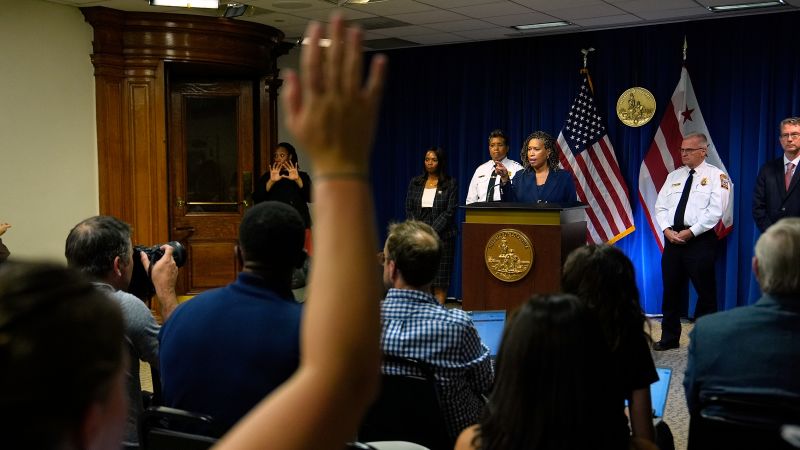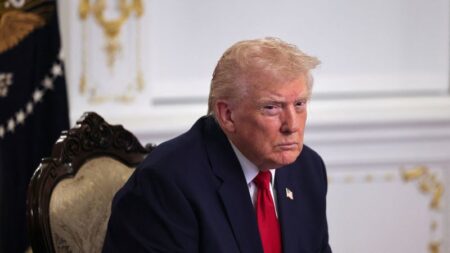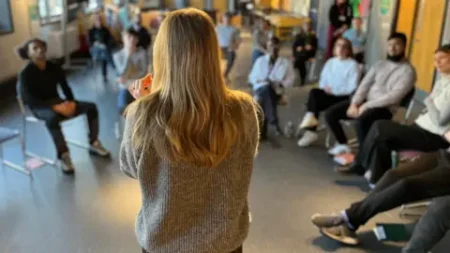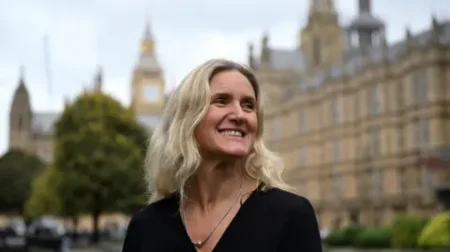In the wake of Donald Trump’s presidential victory, Washington, D.C. Mayor Muriel Bowser found herself in the spotlight, facing unique challenges in her effort to govern the capital city. Shortly after Trump’s ascension to the presidency, Bowser made a notable visit to his Mar-a-Lago estate, a move underscoring the necessity for local leadership to engage with the federal powers that be. However, as Trump’s administration proceeded to implement significant federal changes—particularly impacting residents through policies such as job cuts—Bowser was compelled to navigate these turbulent waters carefully.
When Republicans exerted pressure on Bowser regarding the prominent “Black Lives Matter” mural that graced the street in front of the White House during this politically charged time, she ultimately acquiesced by agreeing to its removal. Her justification centered around a pragmatic approach to governance. Bowser indicated that her administration had more pressing concerns, specifically the challenges of managing workforce reductions initiated at the federal level under Trump’s leadership. This decision exemplified the mayor’s tactical balancing act: negotiating local governance while being cognizant of the overarching influence of the federal government.
As Trump took steps to federalize policing efforts within D.C. and mobilized the National Guard, Bowser was thrust into a critical test of her leadership abilities. Facing an unprecedented intersection of local authority and federal intervention, she sought to convey a multi-layered message to her constituents. On one hand, she described Trump’s executive action as “unsettling and unprecedented.” Yet, she refrained from explicitly criticizing the President, navigating a careful line between maintaining peace and asserting her leadership.
During public statements, Bowser articulated a sense of resignation coupled with cautious optimism, suggesting that the enhanced federal law enforcement presence might yield benefits for community safety. By framing her dialogue this way, she effectively sought to communicate her commitment to public safety while addressing the complexities of her political reality. In contrast, House Minority Leader Hakeem Jeffries vehemently criticized Trump, claiming that the administration’s credibility regarding law and order was severely lacking and questioning the President’s ability to address the city’s issues from the address located at 1600 Pennsylvania Avenue.
As the situation developed, a chorus of Democratic leaders echoed similar sentiments. Los Angeles Mayor Karen Bass, dealing with her own experiences regarding Trump’s deployment of the National Guard, described the federal actions as a publicity stunt, reflective of the broader resentment towards the administration’s tactics. Christina Henderson, a member of the D.C. Council, weighed in on the challenges Bowser faced, noting the historical context in which D.C. operates without full autonomy or representation in Congress since its establishment as a federal district.
Bowser further elaborated on her position during a virtual discussion with community leaders, expressing the need for residents to engage actively in protecting the city’s autonomy and governance. She emphasized the importance of collective action and expressed a vision for navigating the political landscape post-Trump, advocating for the election of a Democratic House to counteract the perceived authoritarian tendencies of the administration.
Veteran political analyst Tom Sherwood reflected on Bowser’s strategic diplomacy in dealing with federal officials, recognizing that her administration is obliged to tailor its responses to counter the federal narrative that inaccurately portrays D.C. as disinterested in crime prevention. As the frustrations towards the Trump administration galvanized activists across the city—especially those advocating for D.C. statehood—these dynamics highlighted the tension between local and federal authorities, and the struggle for D.C.’s residents to attain full democratic representation.
In this politically charged environment, grassroots movements such as Free DC vocalized their opposition to federal interventions, emphasizing that systemic solutions should prioritize uplifting communities over punitive measures. Despite some criticism directed at Bowser for not adopting a more militant stance, community leaders like Nee Nee Taylor acknowledged the complexities of her position as mayor of a non-state entity. Ultimately, the situation represents a microcosm of broader national struggles regarding governance, representation, and community empowerment in the face of federal overreach, illustrating the delicate balance Bowser must maintain in her leadership role during a particularly contentious political climate.











